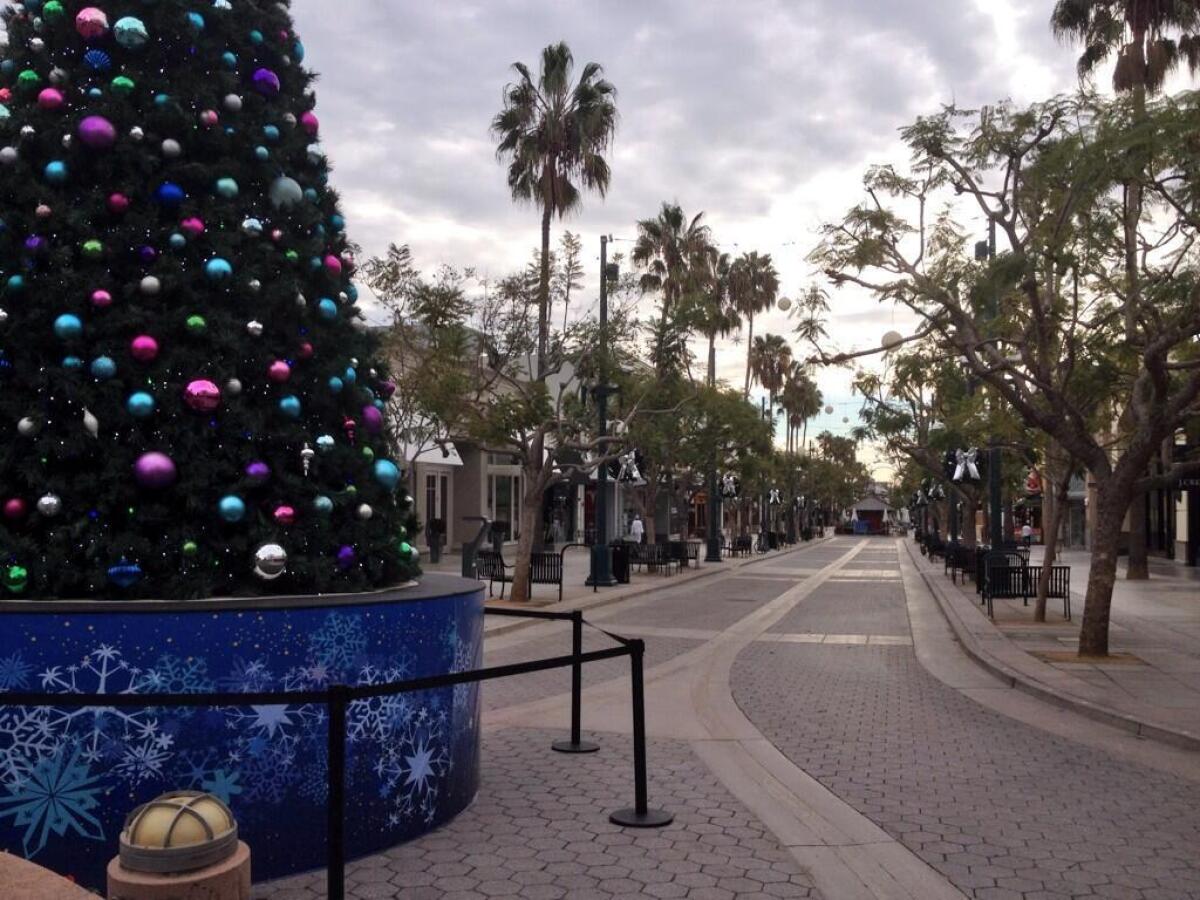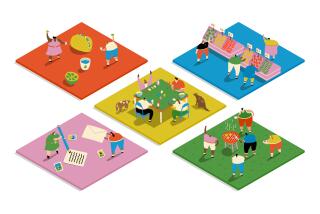Op-Ed: Itâs on us to keep our neighborhoods vibrant. Read this before your next quarantine walk

I live in Santa Monica, and ordinarily I give the cityâs Third Street Promenade a wide berth just before Christmas, when cranky holiday shoppers clog the streets and parking is impossible. But this last December my daughter and I walked down to have dinner there. The crowds we had braced for were absent. Instead, we were struck by sparsely used parking structures and stores going down like ninepins, to stand empty or be reborn as offices or luxury condos.
And that was before the coronavirus hit.
I still walk the streets, only now Iâm a vision in bank-robberâs face mask and sweaty gloves, my once-stylized haircut rapidly evolving into a fright wig. In the space of three months, COVID-19 has turned the dwindling Promenade into a dead zone: Nothing to see here but boarded-up stores and restaurants valiantly trying to stay afloat with takeout and delivery. Our sidewalks have started to look like outtakes from the 2004 zombie horror comedy âShaun of the Dead.â I hope the shops and eateries can come back, but I worry.
Long before the virus went viral, the internet and its prime enabler, the smartphone, were already thinning our street life or rendering it so hostile we might wish weâd stayed home. Shopping, once a sociable activity that came bundled with lunches out and chit-chats that connected us to family, friends and strangers from different backgrounds, migrated online. I saw it in the packages, now stacked in ever-higher piles in the lobby of my apartment building, mostly home to young working women living four or more to an apartment since the city dismantled rent control. I used to wonder when even the local farmersâ markets would start to offer home delivery. Itâs no longer a fantasy.
Once the crisis passes, these trends will accelerate madly as businesses fail or remain online only. Reluctantly living and working online from my own shelter-in-place, I wonder whether my boomer generation â now voicing anxiety on social media about not being able to see the faces of passersby through their masks â is taking the shrinkage in face-to-face contact harder than millennials or Gen Z. We oldsters worry about surrendering our sidewalks to people like the older white man who, in the middle of a busy intersection during rush hour, jabbed his finger at me excitedly and yelled, âA white person! I havenât seen a white person in three months!â I briefly considered shouting back, âJewish actually, sir,â but my college-aged daughter saw it coming and placed a restraining hand on my arm.
Her generation will take the brunt of the economic collapse that will follow this catastrophe. Yet for all the statistics of rising student anxiety and depression, at USC, where I teach part-time, my students remain remarkably unfazed and cheery. Unlike me, they navigated with serene competence to our first Zoom class and stepped up heroically for class discussion, some of them in pajamas, others munching lethal-looking foodstuffs from cereal bowls. One young woman piped up contentedly, âProfessor Taylor, Iâm in bed!â To which I could only respond, âI see that.â
Yet we humans, young and old, are sociable animals, and there is at least a possibility that this global threat will help us think twice about the atomization that bogged us down in mutual estrangement and its attendant displays of public rage before COVID-19. Inventive innovation, wit, and unexpected alliances have rushed in to bolster community and public spirit. A friend of a friend made and mailed me a pair of cloth face masks and, in lieu of payment, asked me to donate to a food bank. The newlyweds next door put six toilet paper rolls on a decorative Easter display out in the lobby for anyone to claim instead of eggs. When I asked my other neighbor, a heroic ER nurse whoâs probably all of 25 years old, if he wouldnât mind putting his work shoes on the balcony instead of outside my door, he texted back: Absolutely, and please know that I change my clothes in the car when I leave work, and may I shop for groceries for you, and Iâm leaving you surgical masks outside your door.
Now weâre texting pals, Iâm his DVD supplier, and I have two words for anyone who slags off young people in my presence: OK, boomer.
Before the current plague sent us indoors, to go out on foot was to risk getting knocked over by smartphone junkies who lumbered around the sidewalks, bellowing into devices or surfing the net as they abdicated responsibility for avoiding collision. Some still do that; more often, though, I now see people offering friendly nods and smiles or fleeting chats in the streets. âNothing personal!â a smiling jogger sings out as he executes a wide circle around me when Iâm out for my daily constitutional. Soon weâll be dating.
If thereâs one thing the pandemic and our current cultural-political standoff have taught us, itâs that democracy and civil society are not things we can take for granted, expecting them to sustain themselves. They need to be fed and watered, revised and renewed daily, face to face, at the grassroots.
Hereâs an idea we can implement now, even before restrictions are lifted: Put your phone away on the street during your daily walks and talk to strangers, at a safe distance through your mask, about anything, politics included. And when this is all over, keep doing it. Itâs so much easier to listen and remain civil when youâre face to face.
As a British expat who grew up on stony stares on the London Underground, Iâve always been thrilled by Americansâ friendly openness to the random encounter. Letâs not throw that away.
Ella Taylor is a film critic for npr.org, the Criterion Collection and others, and an adjunct professor in the School of Cinematic Arts at the University of Southern California.
More to Read
A cure for the common opinion
Get thought-provoking perspectives with our weekly newsletter.
You may occasionally receive promotional content from the Los Angeles Times.










